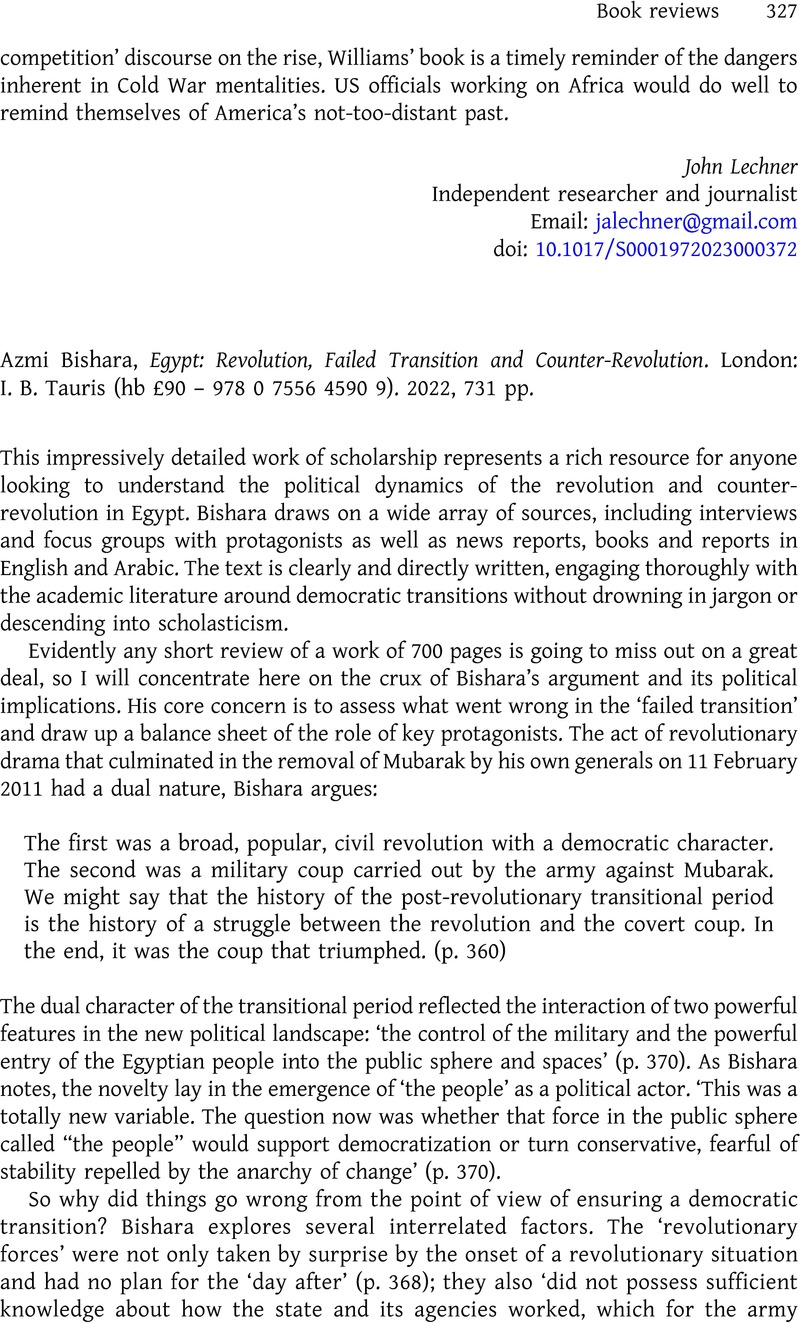No CrossRef data available.
Published online by Cambridge University Press: 04 May 2023

1 A. Alexander (2022) Revolution Is the Choice of the People: crisis and revolt in the Middle East and North Africa. London: Bookmarks, p. 382; A. Alexander and M. Bassiouny (2014) Bread, Freedom, Social Justice: workers and the Egyptian revolution. London: Zed Books, pp. 299–300.
2 W. Berridge, J. Lynch, R. Makawi and A. De Waal (2022) Sudan’s Unfinished Democracy: the promise and betrayal of a people’s revolution. London: Hurst.